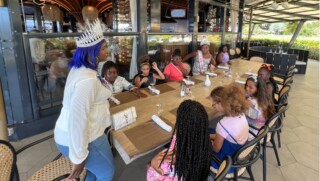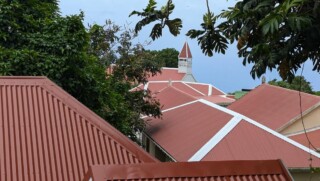Nature and Environment Policy Plan 2020-2030 for BES Islands

Kralendijk, The Bottom, Saba, Oranjestad, St. Eustatius -The Dutch Ministries of Agriculture, Nature and Food Quality, Infrastructure and Water Management and Interior and Kingdom Relations released a Nature and Environment Policy Plan for 2020-2030 for the Caribbean Netherlands. This document will serve as the framework on which all environmental policy can be built upon for the next decade.
The Caribbean Netherlands (Bonaire, St. Eustatius and Saba) is a biodiversity hot spot, home to at least 200 endemic and 143 endangered species. These species are dependent on the unique habitats offered by each island, including coral reefs, mangroves, seagrass beds, saliñas, beaches, open and deep sea and dry, tropical and cloud forests. The vast array of environments found within the Caribbean Netherlands can make drafting policies to protect natural assets quite difficult. However, now more than ever, it is important to link the health and well-being of these islands and their inhabitants to the health of these various ecosystems. The Nature and Environment Policy Plan (NEPP) draws attention to the most significant threats to these environments and sets the frame-work for crafting innovative solutions to ensuring these environments are properly managed and preserved. This document defines responsibilities, policy targets and the legal obligations related to this management, as it relates to natural resources for the islands of Bonaire, St. Eustatius and Saba.
The NEPP emphasizes the need for future policies to include balance between the economic success and cultural identity of the islands with maintain-ing healthy and resilient natural environments. To achieve this, the document established four strategic goals, each with three target areas to be addressed:
Strategic Goal 1: Reverse coral reef degradation to enhance the well-being of the Caribbean Netherlands
Coral reefs are incredibly important to these islands, serving as both productive and vibrant ecosystems as well as economic drivers through tourism. Recent studies have worked to document the degraded state of coral reefs around all three is-lands, and the NEPP highlighted three target areas to try to reverse these trends. Target 1 is to control erosion and runoff thru the creation of buffer zones; stabilizing coastal areas and minimizing pollutants entering the water. Free roaming animals, uncontrolled coastal development and poor rain-water management were identified as the biggest threats. Target 2 concerns waste and wastewater management to improve water quality through the reduction of nutrients within the groundwater and coastal areas. This includes addressing landfill issues and illegal dumping of waste. The final target concerns coral reef restoration. The goal is to restore shallow water areas to baseline levels of coral cover through coral reef restoration of elk and staghorn coral. In April the Cabinet announced to allocate 7.2 million euros to halt deterioration and to restore coral reefs.
Strategic Goal 2: Restore and conserve the unique habitats and species in the Caribbean Netherlands
There are a variety of other key habitats which must be protected to preserve the unique environments found on these islands. This includes identifying and protecting keystone and flagship species which could be especially vulnerable to environmental changes. Target 1 identifies the need for conservation and restoration of these key habitats. Although there have been some significant steps forward through the establishment of protected areas, there is still important work which needs to be done to create and implement legislation to protect both land and in water environments. This includes the need for a plan to address the increasing influx of sargassum. Target 2 focuses on the conservation of keystone and flagship species. Annex 1 of the NEPP provides an overview of these species and notes the importance of establishing breeding or nursery programs to further improve endemic populations. The final target works to control new and existing invasive species. These invasive species must be controlled through either complete removal (ex: lionfish, rats, feral cats and dogs) or through ecosystem restoration (ex: coralita and seagrass).
Strategic Goal 3: Sustainable use of land and water for the developmentof the local economy
Tourism is key to the economies on each of these islands, most of which are centered around having healthy natural environments. Over exploitation of these natural resources is leading to worsening conditions, which could in turn negatively affect residents’ and visitors’ overall experience. The first target set is to establish sustainable fisheries. Culturally, fishing has been an important part of island life, however, unsustainable practice could lead to the complete collapse of local fish stocks. Implementing sustainable practices will not only improve biodiversity and richness of fish populations, but ensure the future for local fishing industries. The second target concerns balancing the tourism industry with nature conservation. This includes the need for the island governments to set carrying capacities for each island and to design and implement sustainable long-term tourism strategies. The final target within this goal concerns investing in sustainable local food production. All three of the islands rely heavily on imported food, however, through investments to support local food production, local landscape quality could be improved while also stimulating the local economy and increasing food security.
Strategic Goal 4: Create local conditions to ensure sustainable results of nature policy in the Caribbean Netherlands
The success of these goals will only be possible with support at all levels, which will require increased public awareness and support of research to fully understand the state of nature for each island. The three targets set for this goal are centered around this idea. Target 1 involves creating awareness through education and training. Target 2 focuses on the creation of quality employment through investments in nature while building capacity and expertise among the local workforce. Lastly, target 3 highlights the importance of having a clear scientific agenda to establish a baseline on which to design conservation, restoration and sustain-able practices for the protection of these critical habitats.
Implementation
Achieving these goals and targets will only be possible through effective implementation of strategic plans by local governments. This document works to provide the framework which the islands can use to design these strategies for the next decade. It is crucial that local governments prioritize these natural resources. This may require changes at all levels, from small shifts in daily household practices to overarching governmental changes. Together we can all work to build a sustainable future for the environments on these islands
Also read
- Traveling abroad?

- Curaçao Seeks ‘Level Playing Field’ for Local Airlines

- First Edition of Bonaire by Night on Friday, August 2

- Edsel Winklaar appointed interim director at Selibon N.V.

- Bonaire Human Rights Organization advocates for Bonaire in Azerbaijan













